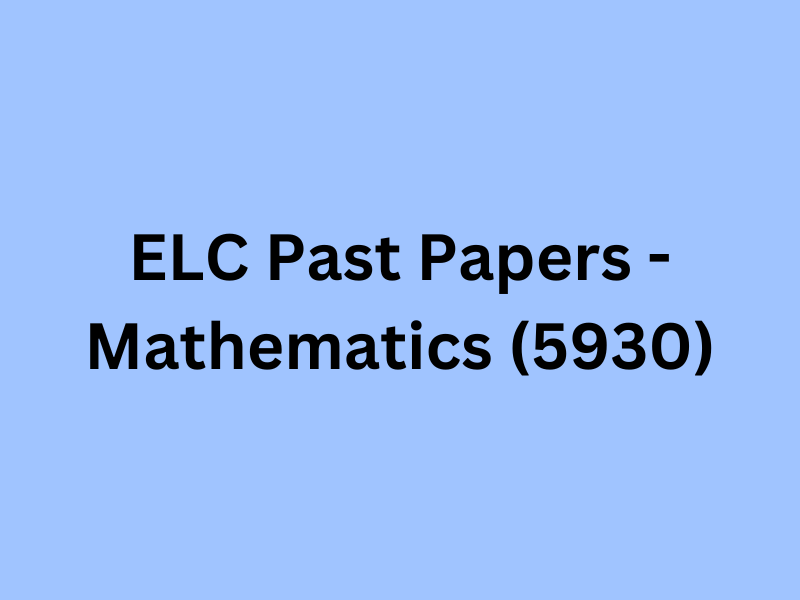General assessment criteria
Types of points
There are four assessment objectives examiners look for in your paper. In each question, there’s a specific number of marks allotted for each objective depending on its nature.
Here is their weightage in the subject as a whole and each paper:

Here is the definition of each objective and exam-style examples:
Knowledge: A simple point from business concepts and techniques.
Ex. Using democratic leadership can motivate employees. Kaizen can increase efficiency by reducing waste.
Application: Applying knowledge to a case by referring to a business or a key term relating to it explicitly.
Ex. EQR can increase prices at its cafe by increasing added value.
Cash is important for Kamela’s business to pay employees who make high quality beauty products.
Analysis: Developing a knowledge point by analysing it’s positive or negative effect on a group such as the employees, owners, customers, suppliers or the environment
Ex. Legal controls may restrict the amount of goods which can be imported, reducing potential sales.
By being ethical, the brand will have a better reputation attracting more customers.
Evaluation: Recommending an option over something else by providing a reason and rejecting the alternate option(s).
Ex. I think job enrichment is a better way to motivate employees than profit sharing as some employees aren’t motivated by money and it can help them feel valued.
Additionally, as if there’s little profit, distributing it can reduce capital available for expenses.
I recommend Ritesh should become NM’s operations manager as Samuel is not familiar with Country Z’s market. Since Ritesh has worked with a competitor’s firm, he will have a competitive edge.
Command terms
Command terms are used to start each question to indicate what is expected in the answer. It is useful to know them to understand the demands of the question and appropriately answer it. Here is the list of command terms used and their definition by CIE.
- Calculate: work out from given facts, figures or information
- Consider: review and respond to given information
- Define: give precise meaning
- Explain: set out purposes or reasons / make the relationships between things evident / provide why and/or how and support with relevant evidence
- Identify: name/select/recognise
- Justify: support a case with evidence/argument
- Outline: set out main points
- State: express in clear terms
Guide to Paper 1
Subsection (a) and (b)
Types of questions commonly asked:
- Definition
- Calculation
- Identification of two points relating to a business concept
The only assessment objective tested in subsection a and b is knowledge.
For definitions, it’s important to use precise keywords and not answer the questions vaguely. Do not give examples to explain the concepts and just give concise responses consisting of one or two sentences. Do not connect the definition with the case as it must be common to all. Majority of definitions are repeated from past papers so it’s useful to go through them.
For calculations, first write a formula, substitute the values into the formula and derive the answer from it. Although you will gain full credit for the answer if it’s correct without marking, it is advised you write the formula in case the working is incorrect where you shall get one mark. You must include brackets ‘()’ or a minus sign ‘-’ to signify negative values or ‘%’ for percentages.
For identification of points, you do not need to write a full sentence in most questions as long as you state the main point. Do not write more than two points as even if one of the earlier ones is wrong, you will not be credited for the latter. Do not connect it with the case (unless the business is mentioned in rare cases).
Subsection (c)
Types of commonly asked questions
- Outlining two points related to a business concept
Identification of four points related to a business concept
Questions asked in subsection c are similar to questions in subsection a and b where one must identify points except the only difference is that there are two marks for application. You just need to state the knowledge point required and connect it to the business (two times as you will get only one mark for one reference to the business). However, if the question does not mention the business (often in one of the subsections – common for identifying four points), there will just be four knowledge marks. Here also, do not write more than two knowledge points as even if one of the earlier ones is wrong, you will not be credited for the latter for the identification question.
Subsection (d)
Subsection d will always ask to explain two ideas or concepts which are related to the business. The marks distribution is two knowledge points, two application and two analysis points (one knowledge, one analysis and one application point for each way/reason/advantage /disadvantage). Despite this, you should aim to write more than one analysis and application point for each explanation, if you have enough time, in case the previous one isn’t valid. It should be noted that you can’t use the same application point to gain marks twice.
Subsection (e)
Subsection e will always ask to compare things and justify which is better than the other or if something is the best type of its category. It has two knowledge, two analysis and two evaluation points. The format is: one advantage, its analysis, one disadvantage, its analysis and evaluation where you must give a new reason for your choice and why you rejected the alternative. Your recommendation should only be made in the conclusion and you must talk about both options equally to demonstrate to the examiners that your answer is balanced.
Model Answers [From March 2022 – Paper 12)
Nancy wants to be an entrepreneur. She has analysed market research data and decided to start up a book shop. Nancy has identified a suitable location and prepared a business plan. Nancy is 2 calculating her total costs. She will use this information to help her complete a break-even chart as shown in Figure 2.1. Nancy is also considering using e-commerce.

a) Identify X and Y.
- X: Total revenue
- Y: Margin of safety
b) Define ‘total cost’.
- The sum of the fixed and variable costs of producing the total output.
c) Identify four factors a service business should consider when deciding on a suitable location.
- Factor 1: Proximity to other businesses which could be competitors
- Factor 2: Availability of labour
- Factor 3: Taxes
- Factor 4: Market potential in the area
- Way 1: It can help to get financing.
Explanation: As Nancy is starting up a bookstore, she needs finances to pay the initial costs before there is revenue thus having a business plan can show the investors the business is likely to be successful, making her able to repay the debt. - Way 2: It can help with decision making.
Explanation: The objectives and strategies in the business plan can guide Nancy to assess which will be best for her bookstore so that she won’t lose money on unprofitable choices.
e) Do you think the threats of e-commerce are greater than the opportunities for a new business? Justify your answer
- There is increased competition online which will make it difficult for the business to stand out and appeal to the customers. This means that the business may see low sales until it becomes known making it harder to recoup the initial expenses. Nevertheless, there is also a larger market potential since e-commerce isn’t limited to the geographical accessibility allowing to have a larger number of customers. The increased sales and revenue will make it easier for the new business to survive. No, I do not think the threats of e-commerce are greater than the opportunities as e-commerce can be a cheap way to promote and raise awareness about the business which if successful can attract customers and stand out from the competition.
Guide to Paper 2
Subsection (a)
Types of questions commonly asked:
Stating two points related to a business concept and explaining it
Stating four points related to a business concept and explaining it
Calculations
In paper 2, you’ll typically have two questions which ask to explain two points and two questions which ask to explain four points. The main difference is the number of knowledge points in each question. In the questions you have to explain two points, there will be two knowledge points and six analysis points (3 for accompanying each knowledge point – of which one must be applied to the context) and in the question you have to explain four points, there will be four knowledge points and four analysis points (1 for accompanying each knowledge point which must be applied to the context). There will typically be one generic question not mentioning business where you don’t gain application marks thus you don’t have to apply to the context.
Occasionally, you might come across questions requiring calculations. The principles of calculations in paper 2 are identical to the ones in paper 1: Write the formula, substitute the values and derive the answer from it. Include brackets ‘()’ or a minus sign ‘-’ to signify negative values or ‘%’ for percentages.
Subsection (b)
Types of questions commonly asked:
Considering 2 given options and recommend one/decide which one has the most significant effect
Considering 3 given options and recommend one/decide which one has the most significant effect
- Justifying using given financial information
Subsection b doesn’t have an explicitly defined points system but it can be inferred overall based on the assessment objectives weighing. Write at least 6 knowledge points (distribute it evenly across the options – for example in a question with three options, write one advantage and disadvantage for each). After each point, include analysis and further analysis. Further analysis is simply just building on the same idea of the analysis point or stating a new analysis point from the knowledge point. Unlike the other questions where you can usually get marks by mentioning the keywords from the business, application must be integrated into the question with your answer being unique to the business only. Talk about all the options and the advantages and disadvantages equally to be balanced. Examiners classify your points as different levels with varying marks. The highest levels typically have detailed points with inference from implicit information and are well justified. While it’s okay to have some L1 points, L3 points will place you in the highest band of 9 to 12 marks. When there’s a question involving calculations of financial information, you must use the numbers to draw conclusions about what it means for the business and whether it’s good or bad. You might have to compare different financial statements where you can use financial ratios to analyse which is better. Writing the formula for these calculations will not be necessary as long as the final answer is correct.
Model answers [from March 2022 – Paper 22]
a) Explain one advantage and one disadvantage to Sadiq of delegating tasks to his employees.
Advantage: Sadiq will have more time.
Explanation: If Sadiq has less work, he can devote the extra time to concentrating on the work he has thus making better decisions. This can improve the success of the hotel and attract more customers therefore allowing him to solve MH’s cash flow problems.
Disadvantage: Sadiq will lose control over the business.
Explanation: As Sadiq has previously never delegated his work, the employees may not have any management or marketing skills which may be beneficial to MH. Therefore, the employees may make some wrong decisions which may decrease the quality of customer service of MH. Therefore, MH may lose customers, decreasing its market share.
b) Consider the following three ways Sadiq could achieve a high-quality service at MH. Which is the most effective way? Justify your answer.
Only buying food ingredients from suppliers that guarantee good quality: It ensures all meals are of high quality if the ingredients are of good standard. This can attract customers to MH because of the food and form loyalty towards the business. However, the cost of ingredients will be higher making the prices of the meals higher. Therefore, customers may not be able to afford the meals thus not want to go to MH. This may lower MH’s revenue from 3000 per night.
The room cleaners made responsible for checking their own work: This can motivate the cleaners as they will feel that they’re trusted thus removing the need of having a different method of motivation such as bonuses. Therefore, Sadiq can save money from spending it on financial rewards or purchasing fringe benefits to motivate the cleaners. However, the cleaners may want more wages due to the added responsibility which if not given can cause dissatisfaction amongst them.
Chefs regularly sampling food before it is served to guests: This will ensure every meal is of high standard and no bad meals are served thus reducing customer complaints and needing to re-cook meals. However, this system identifies when the meal is cooked poorly and not the reason why. Therefore, it will still lead to waste of food if the problem is not solved. This means that there will still be unnecessary costs for preparing the food.
Conclusion: I recommend having good quality ingredients is the most important as if the ingredients are high quality, the food will be too, not requiring the chef to sample it before it’s served. Making room cleaners will also increase their workload therefore increasing the amount of time spent on it, decreasing efficiency. Additionally, if the food is of high quality, the reputation of MH can improve leading to more sales.
Advice for the exam
Studying and exam preparation advice
Firstly, ensure you know the content before doing past papers. Do not focus much on the exact definition of terms but the overall understanding of the concept. Make sure you can state at least 2 features or advantages/disadvantages for the majority of the concepts. Use various techniques which help you to learn such as visualising concepts, creating mind maps, researching about the practises and workings for real life businesses, writing a song to remember it etc. If you’re learning it with school classes, take running notes during class as it can help you remember the topic better. Once you’re around 70 percent familiar with all the concepts, start doing question papers. Additionally, I would consider correcting the paper and finding areas on where you need to improve just as, if not more, important than doing the question papers itself. Always read the marking scheme either before or after you’ve done the question paper. After you’ve done some papers, time yourself doing the exam to ensure you finish within the time limit. The number of past papers you should do depends mostly on your ability but I advise you to do at least 5 entire papers from each component before your exam. Make sure to go through various resources such as books, notes, examiner reports and the learners guide.
General Tips
- Underline keywords in the case to use as application
- Just naming the business doesn’t count as applicational marks
- You can use the blank pages if you run out of space as long as you indicate where the answer can be found and label it
- To think of analysis points, ask yourself the question “So what?” after writing the knowledge point. “So what if employees are motivated? How does it affect the business” or “So what if the business has an unethical brand image due to their wastage? Why should the business care?”
- For analysis points, transitions such as “this means that…” or “as a result..” is useful
- If you’re stuck on a question, leave it and come back to it after you’ve finished the rest of the questions. Do whatever you know first.
- Allocate a specific amount of time for each question and subsection so that you don’t run out of time during the exam. My personal time management strategy is:
- Paper 1
- 20 minutes for each question
- 2 minutes for subsection a
- 2 minutes for subsection b
- 4 minutes for subsection c
- 6 minutes for subsection d
- 6 minutes for subsection e
- 10 minutes to check the paper at the end
- 20 minutes for each question
- Paper 2
- 10 minutes to read the insert
- 20 minutes for each question
- 8 minutes for subsection a
- 12 minutes for subsection b






